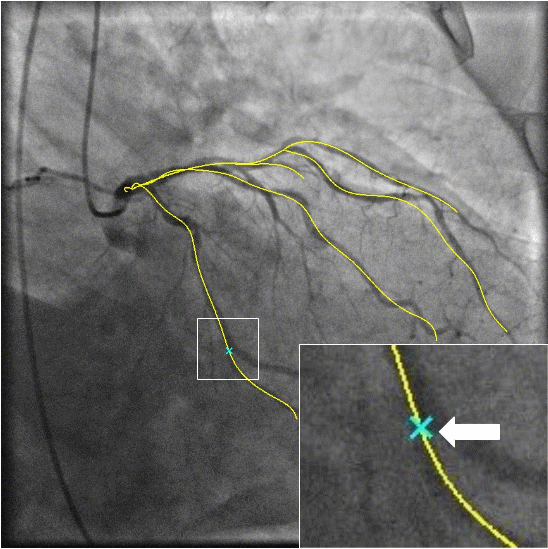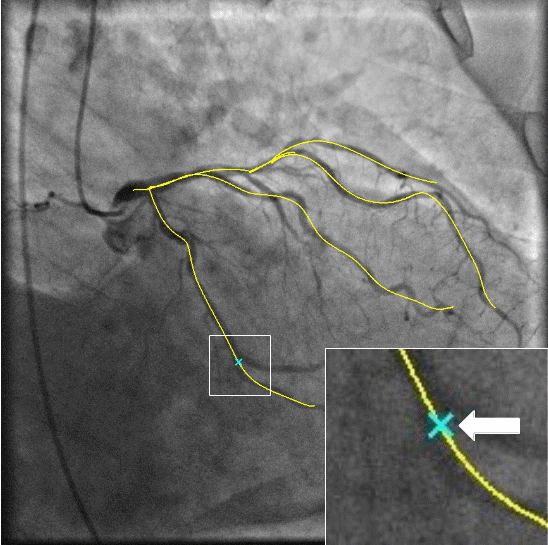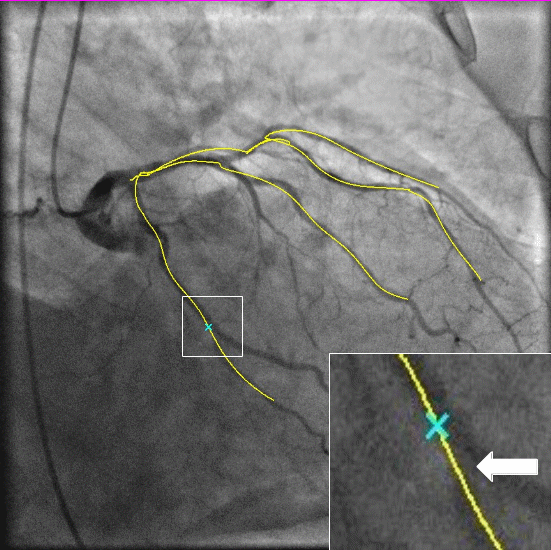Section: New Results
3D Coronary vessel tracking in x-ray projections
Participants : Emmanuelle Poulain, Grégoire Malandain.
This work is made in collaboration with Régis Vaillant (GE-Healthcare, Buc, France) and Nicholas Ayache (Inria Epione team).
Percutaneous Coronary Intervention (PCI) is a minimally procedure which is used to treat coronary artery narrowing. The physician intervenes on the patient under the guidance of an x-ray imaging system. This system is not able to display a visual assessment of the coronary wall, contrary to the pre-operative Computed Tomography Angiography (CTA). To help physician to exploit this information during the course of the procedure, registering these two modalities would be useful. To this aim, we first proposed in a previous work a method of 3D coronary tracking of the main vessel in x-ray projections [27]. This approach is only applicable when the operator has avoided vessel superimposition over the vessel of interest. To further extend the concept, we explore the benefit of doing the deformable registration over the whole coronary tree. This benefit is illustrated in Fig. 15 and through tracking videos presented in https://3dvttracking.github.io/.
|
The proposed approach involves several algorithmic steps: a rigid registration of the tree to an iso-cardiac phase projection followed by a deformation of the tree represented as a tree-spline.
Indeed, a tree-spline i.e. a tree with a spline attached to each edge and shared control points between these points describes a 3D coronary tree and is able to represent its deformation along the time. We combine this description with a registration algorithm operating between the tree-spline and the angiographic projection of the coronary tree. It starts by the estimation of a rigid transformation for the iso cardiac phase time followed by a non-rigid deformation of the tree driven by the pairings formed between the projection of the edges of the tree-spline and the observed x-ray projection of the coronary arteries. The pairings are built taking into account the tree topology consistency. Anatomical constraints of length preservation is enforced when deforming the arteries.
This work has been published in FIMH [9].





